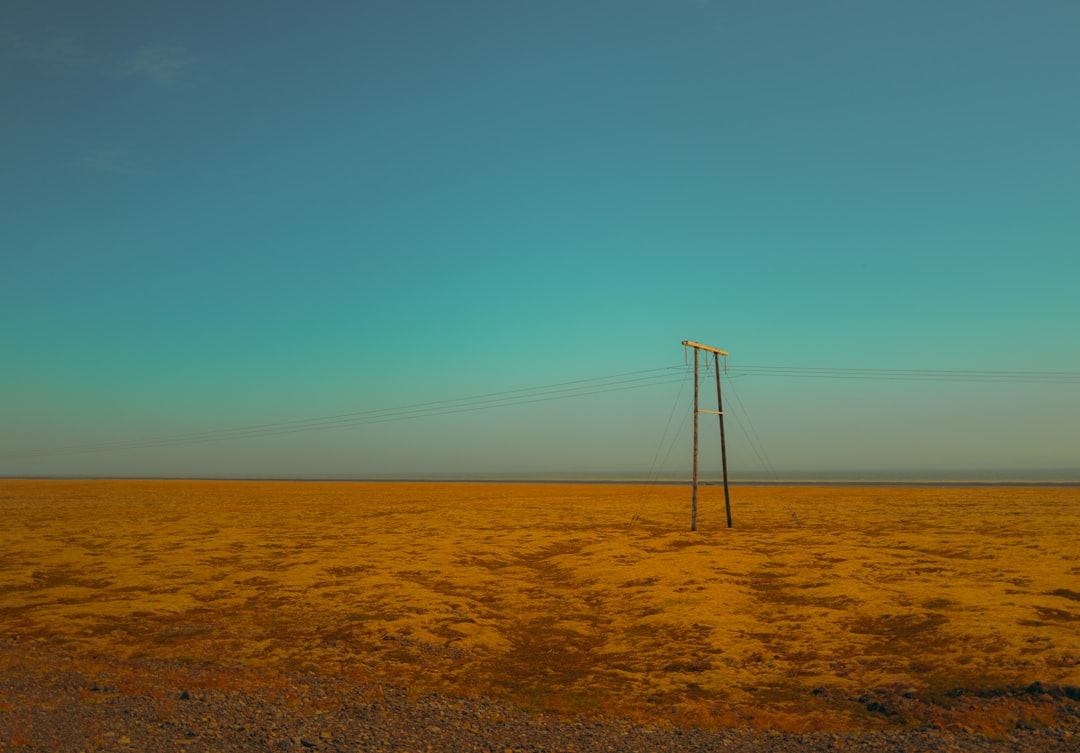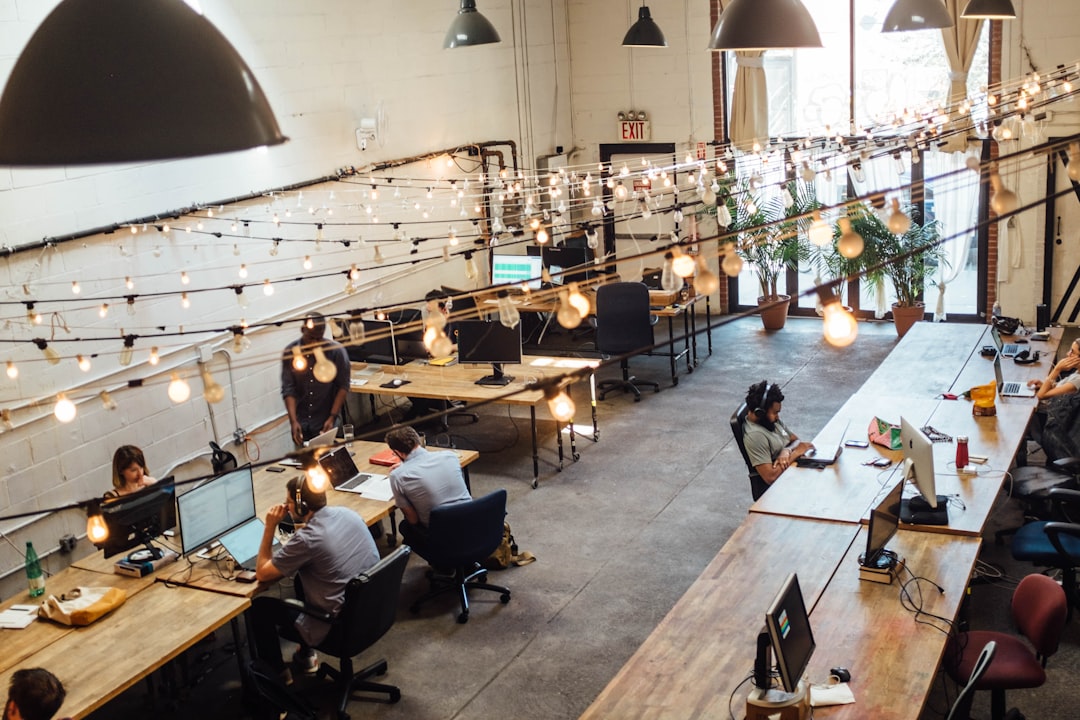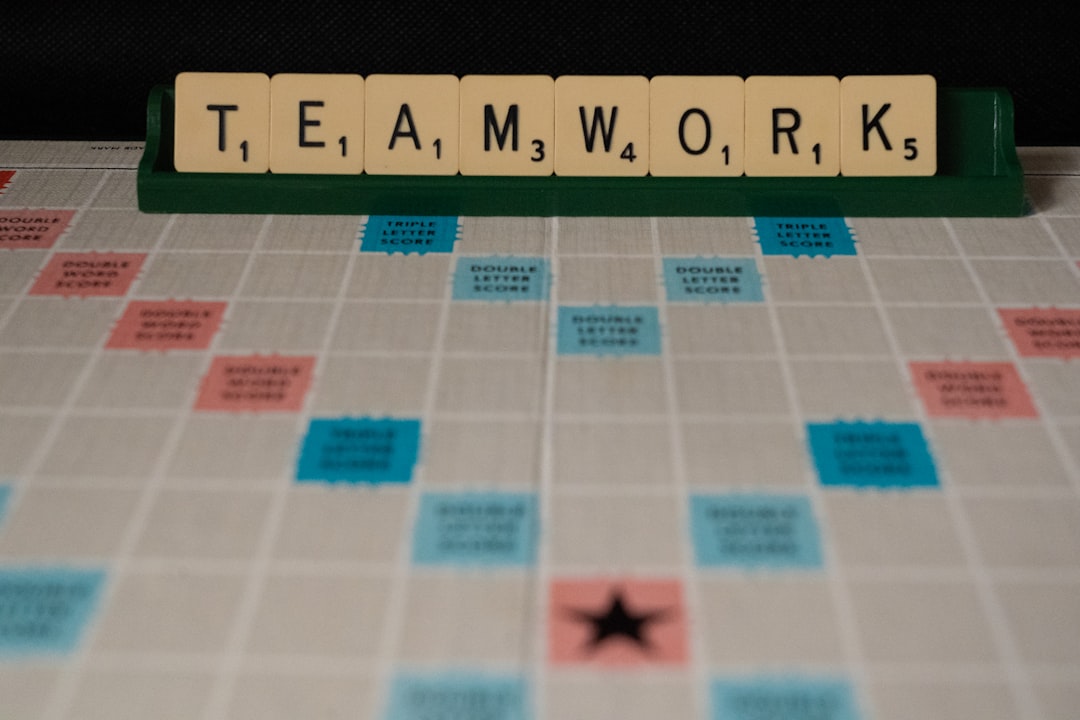Minimalist Nomad How to Travel Light and Live Sustainably

The Minimalist Nomad Mindset
Traveling the world does not have to mean lugging a suitcase the size of a small car. The minimalist nomad philosophy starts with a simple question: What do I really need to live well? When you strip away the excess, you discover a lighter physical load and a clearer mental space. Minimalism is not about deprivation; it is about intentionality. By choosing each item for its purpose, durability, and environmental impact, you create a travel system that supports both your wanderlust and the planet.
The first step is to define your core values. For most nomads these include freedom, flexibility, low environmental footprint, and financial independence. Write them down and keep the list visible. Whenever you consider a new piece of gear or a habit, test it against the list. If it does not serve a clear purpose, it likely belongs in the “maybe later” pile.
Core Principles of Traveling Light
- One item, many functions – A piece of clothing that can be dressed up or down, a backpack that doubles as a daypack, a reusable bottle that also works as a measuring cup.
- Quality over quantity – Invest in durable, repairable items. A well‑made pair of shoes will outlast three cheap alternatives and reduce waste.
- Multipurpose tools – A Swiss‑style knife with a screwdriver, bottle opener, and tweezers replaces a cluttered toolbox.
- Modular packing – Separate your gear into “daily essentials,” “emergency kit,” and “optional extras.” This lets you adapt quickly to changing itineraries.
- Zero‑waste mindset – Choose reusable over disposable, and plan to leave no trace in every destination.
These principles become the compass for every decision, from the fabrics you wear to the apps you download.
Building a Sustainable Travel Wardrobe
Clothing is often the biggest contributor to a heavy pack. A minimalist wardrobe follows the “capsule” concept: a small collection of versatile pieces that mix and match easily.
Choose Sustainable Fabrics
- Organic cotton – Grown without synthetic pesticides, it is soft and breathable.
- Merino wool – Naturally odor‑resistant, temperature regulating, and biodegradable. A single merino shirt can replace a synthetic tee, a light sweater, and a base layer.
- Recycled polyester – Made from post‑consumer plastic, it offers durability and quick‑dry properties. Look for certifications such as recycled content percentages.
- Hemp and linen – Strong, breathable, and become softer with each wash.
Avoid fabrics that shed micro‑fibers into waterways, such as conventional polyester, unless you can use a microfiber filter in the wash.
Create a Capsule Collection
A typical minimalist nomad wardrobe for most climates includes:
| Item | Why it works |
|---|---|
| 2 merino long‑sleeve shirts | Warm in cold, cool in heat, odor‑resistant |
| 2 short‑sleeve shirts | Quick‑dry, easy to layer |
| 1 lightweight rain jacket | Packable, waterproof, breathable |
| 1 insulated jacket (down or synthetic) | Warmth for colder nights |
| 2 pairs of versatile pants (one convertible) | Convertible pants become shorts, suitable for hiking or city strolls |
| 1 pair of quick‑dry shorts | For hot days and beach visits |
| 1 pair of sturdy walking shoes | Comfortable for long days on foot |
| 1 pair of sandals or flip‑flops | Easy for showers and hot climates |
| 5 pairs of underwear | Merino or bamboo for comfort |
| 5 pairs of socks | Merino for temperature regulation |
| 1 hat and 1 pair of gloves (optional) | For cold destinations |
| 1 reusable travel towel | Compact, fast‑dry |
The total count stays under 25 items, many of which serve multiple roles. Adjust the list based on season and region, but keep the total number low.
Care and Maintenance
- Wash infrequently – Merino and hemp odor‑resist naturally. Spot clean when possible.
- Cold water, gentle cycle – Reduces energy use and protects fibers.
- Air dry – Saves electricity and preserves fabric integrity.
- Repair – Carry a small sewing kit for quick fixes. Extending the life of a garment is the most sustainable choice.
Gear Selection Criteria
When it comes to equipment, apply a simple filter: Does it solve a problem I will encounter, and can it replace something else? Below are the essential categories and recommended items.
Backpack
- Capacity – 30–45 liters is ideal for most solo travelers. It provides enough space for the capsule wardrobe, a laptop, and a small tech kit.
- Material – Look for recycled nylon or polyester with a high denier count for durability.
- Features – Adjustable torso length, padded hip belt, rain cover, and a separate laptop compartment.
- Weight – Aim for under 2.5 pounds (1.1 kg) when empty.
Sleeping System (for those who camp)
- Lightweight tent – A 2‑person freestanding tent made from recycled polyester with a footprint reduces ground impact.
- Sleeping bag – Choose a down bag with a low fill power (650‑800) for warmth‑to‑weight efficiency. If you travel to humid regions, a synthetic bag avoids moisture issues.
- Sleeping pad – Inflatable pads are compact and provide good insulation. Look for PVC‑free materials.
If you plan to stay in hostels, guesthouses, or Airbnb, a sleeping system may be unnecessary. Instead, invest in a portable travel pillow and a compact sheet set.
Kitchen Essentials
- Collapsible silicone bowl – Serves as a plate, bowl, and measuring cup.
- Travel cutlery set – Stainless steel fork, spoon, and a small knife that folds into a handle.
- Reusable water bottle – Stainless steel or BPA‑free plastic.
- Compact spice kit – Small zip‑lock bags with essential spices (salt, pepper, chili flakes).
- Portable coffee maker – A collapsible silicone French press or a reusable filter for drip coffee.
All these items fold flat and occupy minimal space. They replace disposable plastics and reduce the need for eating out.
Tech Toolkit
- Laptop or tablet – Choose a device that balances performance and battery life. A 13‑inch ultrabook often fits in a dedicated sleeve inside the main pack.
- Smartphone – The hub for navigation, communication, and banking. Keep a portable power bank (10,000 mAh) and a solar charger for off‑grid days.
- Universal travel adapter – One unit that works in all regions, preferably with USB‑C ports.
- Noise‑cancelling earbuds – Compact and useful for flights and co‑working spaces.
- External SSD – 1 TB SSD for backups, as solid‑state drives are more resistant to shock than hard drives.
Health and Safety
- First‑aid kit – Band‑aids, antiseptic wipes, pain relievers, and any prescription medication. Keep it in a waterproof pouch.
- Travel insurance card – Digital copy saved on your phone and a printed copy in the backpack.
- Reusable face mask – Cotton or silk, washable and useful in dusty environments.
- Hand sanitizer – Small bottle (30 ml) for quick cleaning.
Packing Techniques and Lists
A well‑packed bag feels balanced, protects fragile items, and makes unpacking a breeze. Follow these steps:
- Lay out everything – Place all items on a flat surface. This visual check helps you spot redundancies.
- Roll clothing – Rolling reduces wrinkles and maximizes space compared to folding.
- Use packing cubes – Assign one cube for shirts, another for bottoms, and a third for accessories. This keeps the bag organized and lets you pull out a specific category without emptying everything.
- Place heavy items close to the spine – Put the laptop, books, and water bottle in the middle compartment, centered on the back panel. This improves balance and reduces strain.
- Compress soft items – Use a compression sack for the sleeping bag if you are camping. For non‑compressible gear, keep it in the outer pockets.
- Fill gaps with socks and underwear – Small items are perfect for stuffing into corners and shoe interiors.
- Keep a “daily essentials” pocket – A small zip‑top pocket for passport, wallet, phone, and a reusable mask. This stays accessible without digging through the main compartment.
Minimalist Packing List – The 3‑Day Test
To ensure you truly travel light, try the “3‑day test.” Pack for three days of travel, then add one more day’s worth of clothing and see how the bag feels. If it’s still comfortable, you have a realistic baseline. Most minimalist nomads find that three days of clothing plus a few interchangeable pieces cover a week’s worth of activities.
Reducing Waste on the Road
Travel creates waste through food packaging, single‑use toiletries, and disposable souvenirs. Minimalist nomads adopt a zero‑waste approach that protects the environment and saves money.
Food and Drink
- Shop local markets – Fresh produce, nuts, and grains come with minimal packaging.
- Bring reusable containers – A set of small glass or stainless steel containers for leftovers and meal prep.
- Refill stations – Many cities have water refill stations; use a refillable bottle instead of buying bottled water.
- Bulk coffee – Purchase beans or ground coffee in bulk and use your portable coffee maker.
Toiletries
- Solid alternatives – Shampoo bars, conditioner bars, and solid soap eliminate plastic bottles.
- Travel‑size reusable bottles – Fill them with your favorite liquid soap or lotion from home.
- Biodegradable wipes – For quick freshening when water is scarce, choose plant‑based wipes that break down naturally.
Shopping and Souvenirs
- Digital souvenirs – Capture photos, write blog posts, or collect local recipes instead of physical trinkets.
- Second‑hand goods – If you need a new item, check local thrift stores. This reduces demand for new production and often yields unique finds.
By integrating these habits, you create a loop where each purchase and disposal decision supports a lower carbon footprint.
Eco‑Friendly Accommodations and Transport
Where you stay and how you move dramatically affect your environmental impact. Minimalist nomads choose options that align with sustainability.
Sustainable Stays
- Eco‑lodges – Properties that use renewable energy, water‑saving fixtures, and locally sourced food.
- Hostels with green certifications – Look for LEED or similar ratings.
- Couchsurfing and house‑sitting – These platforms let you stay for free while reducing the demand for new hotel rooms.
- Long‑term rentals – A small apartment or studio reduces the frequency of check‑ins and check‑outs, saving energy and resources.
When booking, read reviews for waste management practices, linen reuse policies, and recycling availability.
Green Transportation
- Public transit – Buses, trams, and metros have the lowest per‑passenger emissions. Get a monthly pass to avoid single‑ticket waste.
- Bicycle rentals – Many cities now have bike‑share programs. A foldable bike can even travel with you in the main compartment.
- Walking – The ultimate low‑impact mode and a way to discover hidden corners of a city.
- Electric vehicle (EV) rentals – If you need a car, choose an EV where charging infrastructure exists.
- Carbon offsetting – For unavoidable flights, calculate emissions and purchase offsets from reputable projects that focus on reforestation or renewable energy.
By prioritizing low‑impact transport, you keep your carbon budget low while immersing yourself in local life.
Digital Tools for Minimalist Living
Technology can help you stay organized, reduce paper waste, and track your sustainability goals.
- Travel itinerary apps – Keep all bookings, visas, and travel documents in a single encrypted cloud folder (e.g., Notion or Google Drive).
- Expense tracker – Apps like Mint or YNAB help you monitor spending, ensuring financial sustainability.
- Language apps – Duolingo or Memrise let you learn basics without buying phrasebooks.
- Carbon calculator – Use online tools to estimate emissions from flights and offset accordingly.
- Local recycling guides – Many cities have apps that map recycling centers and show accepted materials.
Having everything digital eliminates the need for paper maps, printed guides, and scattered receipts.
Community and the Sharing Economy
Minimalist nomads thrive when they connect with like‑minded travelers and locals. Sharing resources reduces consumption and creates meaningful experiences.
- Co‑working spaces – Offer reliable internet, a desk, and often a community kitchen where you can swap food or cookware.
- Gear‑sharing platforms – Services like GearCommons allow you to borrow camping equipment, reducing the need to own everything yourself.
- Skill swaps – Offer a language lesson, photography tip, or cooking class in exchange for local knowledge or a place to stay.
- Online forums – Subreddits, Facebook groups, and Discord servers dedicated to minimalist travel provide advice, gear reviews, and moral support.
When you give as much as you receive, the community grows stronger and the collective footprint shrinks.
Adapting to Different Climates and Cultures
Traveling light does not mean being unprepared for extreme weather or cultural norms. The key is adaptability.
Climate Adjustments
- Layering – A base layer (merino), a mid‑layer (light fleece), and an outer shell (rain jacket) cover most temperature ranges.
- Quick‑dry fabrics – In humid or rainy areas, choose clothing that dries within an hour to avoid carrying extra dry clothes.
- Sun protection – A wide‑brim hat, UV‑blocking sunglasses, and reef‑safe sunscreen protect you without adding bulk.
Cultural Sensitivity
- Modest clothing kits – Pack a lightweight scarf or a longer shirt for visits to religious sites.
- Footwear etiquette – Some cultures require shoes to be removed indoors; easy slip‑on sandals are handy.
- Local customs – Research greetings, tipping practices, and dress codes before arrival to avoid accidental disrespect.
By respecting the environment and the people you meet, you enhance your experience and reduce the need for corrective measures later.
Maintaining Health and Wellness with Minimal Gear
A healthy body and mind are essential for long‑term nomadic life. Minimalism extends to self‑care.
- Portable yoga mat – A foldable, ultra‑thin mat fits in a side pocket and lets you practice anywhere.
- Resistance bands – Lightweight, versatile, and perfect for strength training without weights.
- Meditation apps – Headspace or Insight Timer guide you through short sessions, helping combat travel stress.
- Sleep hygiene – Pack an eye mask, earplugs, and a small travel pillow to ensure restful nights in varied accommodations.
- Hydration reminders – Use a smartphone timer to drink water regularly, especially in hot climates.
These items occupy minimal space but deliver big returns in energy and focus.
Financial Sustainability and Minimalism
Living with less also means spending less, but the goal is not frugality for its own sake. Financial freedom gives you the flexibility to choose destinations based on interest, not price.
- Earn remotely – Freelance writing, graphic design, programming, or teaching English online provide steady income streams.
- Currency optimization – Use no‑foreign‑transaction‑fee cards and keep an eye on exchange rates to avoid hidden costs.
- Budget categories – Separate “essential” (housing, food, transport) from “experience” (tours, workshops). This clarity helps you allocate funds without overspending.
- Emergency fund – Keep a digital stash (e.g., in a high‑interest savings account) that you can access quickly if plans change.
When your finances are as lean as your pack, you reduce stress and can focus on the journey itself.
Mindset and Habits for Long‑Term Success
Sustaining a minimalist, sustainable lifestyle requires ongoing mental discipline.
- Regular declutter sessions – Every three months, assess each item. If it hasn’t been used, consider donating or selling it.
- Mindful consumption – Before buying, ask: Do I truly need this? Will it add value to my travel?
- Reflection journal – Write weekly about what worked, what felt excessive, and how you felt emotionally. This builds self‑awareness.
- Celebrate small wins – Each time you refuse a single‑use plastic or repair a ripped seam, acknowledge the impact. Positive reinforcement keeps the habit alive.
- Stay curious – Learning new skills (repairing gear, cooking local dishes, speaking a language) reinforces the belief that you can thrive with less.
Over time, these habits become second nature, allowing you to roam freely while staying grounded in purpose.
Conclusion
Traveling light and living sustainably is not a sacrifice; it is an invitation to experience the world more fully. By embracing a minimalist mindset, curating a versatile wardrobe, selecting purposeful gear, and adopting zero‑waste habits, you reduce your environmental footprint and free yourself from the burden of excess. Combine these practices with eco‑friendly accommodations, green transport, digital tools, and a supportive community, and you create a lifestyle that is both adventurous and responsible.
The journey of the minimalist nomad is a continuous experiment in intentional living. Each new city, each new sunrise offers a chance to refine your pack, your habits, and your outlook. As you travel lighter, you will find that the true weight you carry is not measured in kilograms but in experiences, connections, and the positive imprint you leave on the planet.
Carry this knowledge forward, share it with fellow wanderers, and let the world become a place where traveling light and living sustainably are the norm rather than the exception. Safe travels and happy nomading.
Random Posts

The Most Inspiring Locations for Remote Professionals
Discover the top remote-friendly spots where fast internet, vibrant culture and soothing scenery turn work into an adventure, from bustling cities to mountain retreats and sunny beaches.
2 months ago

Boost Remote Productivity With a Smart Home Office Setup
Transform your remote work space with smart tech, ergonomic gear and smart layout tips that cut distractions, improve focus, and boost productivity and wellbeing in any size home office.
1 month ago

Ultimate Nomad Handbook for Beginners
Turn wanderlust into reality with a clear step by step roadmap. Learn the nomad mindset, essential tools, and avoid common pitfalls so you can launch and sustain a life of freedom on the move.
1 month ago

Why Flexible Work Environments Are the Key to Remote Success
Flexible work environments turn remote teams into high-performers by adapting to personal needs, project demands and technology, while coworking hubs provide the connectivity and community essential for success.
1 week ago

Mastering Remote Collaboration Across Time Zones
Learn how to turn global time zone differences into a competitive edge. This guide shares mental models, practical tactics and tools to build a collaboration system that respects each rhythm while delivering results.
2 weeks ago
Latest Posts

Essential Software Every Remote Professional Should Use
Master remote work with essential tools: instant messaging like Slack, high definition video calls such as Zoom, and asynchronous voice apps. Streamline communication, stay connected and boost productivity.
1 day ago

Mastering Remote Work Productivity for Digital Nomads and Freelancers
Learn proven habits, tools, and tactics that help digital nomads and freelancers stay focused, deliver quality work, and maintain a sustainable lifestyle while traveling the world.
1 day ago

Tech‑Friendly European Towns Perfect for Remote Living
Discover Europe’s best small towns where fast internet, affordable living and vibrant tech communities let you work remotely while soaking up historic charm, lakeside views or mountain air.
1 day ago